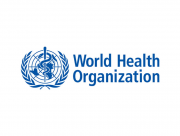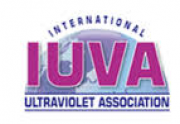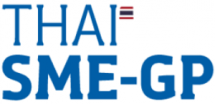UVGI History
อะไรคือระบบ UVGI?
"UVGI" ย่อมาจาก Ultraviolet Germicidal Irradiation หมายถึงระบบการใช้แสงยูวีที่มีความเข้มข้นสูงพิเศษ (Germicidal Range) เพื่อฆ่าและทำลายเชื้อโรคต่างๆ ไม่ว่าจะเป็น Virus Bacteria Fungi และ Yeast & Mold ที่อยู่บนพื้นผิวและในอากาศ
หากเชื้อโรคต่างๆได้รับปริมาณแสงยูวีที่ช่วงความยาวคลื่นของแสง UVC และระยะเวลาที่เพียงพอ (Dosing) แสงยูวีนี้สามารถทะลุทะลวงเข้าในระบบสืบพันธุ์ (DNA) และทำให้เชื้อโรคเหล่านั้นตายในที่สุดได้
หากระบบ UVGI ได้รับการคำนวณออกแบบอย่างถูกต้องและเหมาะสม แสงเหล่านี้จะช่วยลดปริมาณเชื้อโรคในอากาศ (Microbial Content) ป้องกันการเกิดโรคติดต่อทางระบบหายใจ (Respiratory Airborne Diseases) อาทิเช่น ไข้หวัด2009 (H1N1) ไข้หวัดนก (H5N1) วัณโรค (Tuberculosis) แม้กระทั่ง Anthrax และอาการภูมิแพ้ หอบหืดจากสารจำพวก Allergens รวมทั้งยกระดับคุณภาพอากาศภายในอาคาร (Indoor Air Quality) ได้ด้วยการลงทุนไม่มากนัก
ประวัติการใช้งานระบบ UVGI
ปัจจุบัน หน่วยงานต่างๆได้ออกมารองรับในประสิทธิการกำจัดเชื้อโรคด้วยระบบ UVGI นี้ อาทิเช่น CDC (Centers for Disease Control and Prevention) กับการแนะนำให้ใช้ในโรงพยาบาล ASHRAE (American Society of Heating, Refrigerating and Air-Conditioning Engineers) กับการแนะนำให้ใช้ในระบปรับอากาศในอาคาร รวมทั้ง WHO (World Health Organization) ที่แนะนำให้ใช้ระบบ UVGI เพื่อควบคุมการแพร่กระจายของวัณโรค (Tuberculosis)
|
Year |
Event |
Reference |
|
1892 |
พบว่าส่วนของแสงยูวีในแสงแดด มีคุณสมบัติในการกำจัดเชื้อโรค |
Ward (1892) |
|
1904 |
หลอดประเภท Quartz Lamp ถูกพัฒนาครั้งแรกเพื่อสังเคราะห์แสงยูวี |
Lorch (1987) |
|
1906 |
แสงยูวีอยู่นำไปใช้กำจัดเชื้อโรคในน้ำเป็นครั้งแรก (Water Disinfection) |
Recklinghausen (1914) |
|
1909 |
ประเทศในยุโรปเริ่มประยุกต์ใช้แสงยูวีในการฆ่าเชื้อโรคในน้ำ |
AWWA (1971) |
|
1916 |
ประเทศสหรัฐอเมริกาเริ่มประยุกต์ใช้แสงยูวีในการฆ่าเชื้อโรคในน้ำ |
AWWA (1971) |
|
1932 |
แสงยูวี ที่ระดับ 253.7 nm ซึ่งมีประสิทธิภาพในการฆ่าเชื้อโรค ถูกสังเคราะห์ได้ครั้งแรก |
Ehrismann (1932) |
|
1936 |
ระบบ UV ที่ติดเหนือหัว (Upper Air UV) ถูกนำมาใช้ในโรงพยาบาลเป็นครั้งแรก |
Wells and Wells (1936) |
|
1937 |
ระบบ UV ที่ติดเหนือหัว (Upper Air UV) ถูกนำมาใช้ในโรงเรียนเป็นครั้งแรก |
Wells (1938) |
|
1954 |
ระบบ UV ถูกนำมาใช้ร่วมกับระบบปรับอากาศ |
MRC (1954) |
|
1994 |
CDC ยอมรับและแนะนำการใช้ระบบ UVGI เพื่อกำจัดวัณโรค (TB) |
CDC (2005) |
|
1999 |
WHO ยอมรับและแนะนำการใช้ระบบ UVGI เพื่อกำจัดวัณโรค (TB) |
WHO (1999) |
|
2003 |
CDC แนะนำระบบ UVGI สำหรับโรงพยาบาลอย่างเป็นทางการ |
CDC (2003) |
|
2003 |
ASHRAE แต่งตั้งหน่วยงานเพื่อรองรับระบบ UVGI สำหรับการกำจัดเชื้อโรคในอากาศและพื้นผิวโดยเฉพาะ |
Martin et al. (2008) |
|
2005 |
รัฐบาลของประเทศสหรัฐอเมริการะบุให้ใช้ระบบ UVGI ในการกำจัดเชื้อโรคที่ระบบปรับอากาศ (Cooling Coil Disinfection) |
GSA (2003) |
สภาพมลภาวะทางอากาศในปัจจุบันและการใช้ระบบ UVGI
ปัจจุบันมลพิษทางอากาศกำลังเป็นปัญหาใหญ่ จำนวนเชื้อโรคที่อยู่ในอากาศมีมากมายไม่ว่าจะเป็น Virus Bacteria Fungi Yeast & Mold โดยเฉพาะอย่างยิ่งเชื้อที่สามารถติดต่อกันได้ทางระบบหายใจ (Respiratory Airborne Diseases) เช่น ไข้หวัด2009 (H1N1) ไข้หวัดนก (H5N1) SARS และเชื้อวัณโรค (Tuberculosis) เป็นต้น รวมทั้งปัญหาเรื่องภูมิแพ้ หอบหืด อันเกิดมาจากสภาพอากาศภายในอาคารบ้านเรือน (Indoor Air Pollution)
การออกแบบ อาคาร บ้านเรือนให้เป็นระบบปิด (Closed System) เพื่อรักษาพลังงาน ไม่ว่าจะเป็นความร้อนหรือความเย็นจากระบบปรับอากาศ ไม่ให้สิ้นเปลืองค่าใช้จ่าย เป็นอีกหนึ่งปัจจัยหลักทำให้เชื้อโรคเหล่านี้ถูกเก็บสะสมอยู่ภายในอาคาร ก่อให้เกิดโรคภัยไข้เจ็บต่างๆในระยะยาวโดยไม่รู้ตัว (Sick Building Syndrome; SBS)
ปัญหา เหล่านี้ครอบคลุมหมด ไม่ว่าจะเป็นบ้านเรือนที่อยู่อาศัย (Residential Building) จนไปถึงอาคารพาณิชย์ (Commercial Building) ทุกๆที่ โดยเฉพาะ โรงพยาบาล โรงแรม โรงภาพยนตร์ห้างสรรพสินค้า รวมทั้งโรงงานอุตสาหกรรมอาหารและยา ที่ให้ความสำคัญของปริมาณเชื้อโรคในอากาศเป็นพิเศษ (Microbial Content)
นอกจาก สภาพพื้นที่ปิด (Closed System) ที่ส่งผลให้ระบบการถ่ายเทอากาศ (Ventilation) ไม่ดีเท่าภายนอกแล้ว ระบบปรับอากาศภายในอาคารก็เป็นอีกหนึ่งปัจจัยหลักโดยสามารถเปรียบเครื่อง ปรับอากาศเหล่านี้ได้เหมือนกับตู้ฟักเชื้อโรค (Incubator) เนื่องจากภายใน Cooling Coil และ Air Duct มักจะมีระดับความชื้น อุณหภูมิ ที่เหมาะสมต่อการเจริญเติบโตของเชื้อโรค เมื่อเชื้อโรคถูกดูดเข้ามาพร้อมอากาศจากภายนอก เพิ่มปริมาณภายในระบบปรับอากาศ ถึงระยะเวลาที่เหมาะสมมันก็จะออกมากับอากาศ สร้างปัญหาให้กับผู้อยู่อาศัย
the following ranges:

The sun emits ultraviolet radiation in the UVA, UVB and UVC bands, but because of absorption in the atmosphere, 98.7% of the ultraviolet radiation that reaches the Earth's surface is UVA. Ordinary glass is partially transparent to UVA but blocks UVB and UVC. This feature gives sunglasses and eye wear UV protection capabilities. A positive effect of human UVB exposure is that it induces the production of vitamin D in the skin.
UVC rays are the highest energy form of ultraviolet light. Since UVC rays are filtered by the Earth's atmosphere, organisms have not developed a natural defense against UVC energy. When the DNA of a microorganism absorbs UVC energy, molecular instability occurs resulting in the disruption of the DNA sequence. This renders the cell unable to grow or reproduce. Without the ability to reproduce the cell cannot infect and it rapidly dies.

The World's Most Wanted Felons
Altru-V applies the Power of the V to seek out and destroy the nastiest felons–bacteria, viruses, and molds hiding in your equipment and circulating through your ductwork. Rely on Altru-V to drive out the felons and drive efficiency and performance back into your HVAC system while you enhance your air quality.
Inactivating Microorganisms
The application of UVC energy to inactivate microorganisms is known as Germicidal Irradiation or UVGI. It has been used for this purpose since the early nineteen hundreds. Artificial UVC energy is produced in germicidal ultraviolet lamps which produce UV radiation by ionizing low pressure mercury vapor. These lamps are similar to typical fluorescent household lighting fixtures but do not have the phosphorescent coating which imparts the soft white light. Ionized mercury emits a predominately discreet wavelength of 254nm - in the UVC band and, as it happens, is an ideal wavelength for disrupting the DNA of microorganisms.
The amount of UVC energy needed to inactivate a given microorganism is measured by dose, which is determined by a combination of irradiation energy and exposure time. Scientists have determined the rates at which various microbial populations decline due to exposure to biocidal factors such as UVC irradiation. Based on mathematical modeling, UVDI engineers have developed proprietary and third party validated computer modeling programs to estimate deactivation rates for target microorganisms and subsequently design UVC systems that will efficiently and effectively disinfect the air, surface or water situation of interest.
















